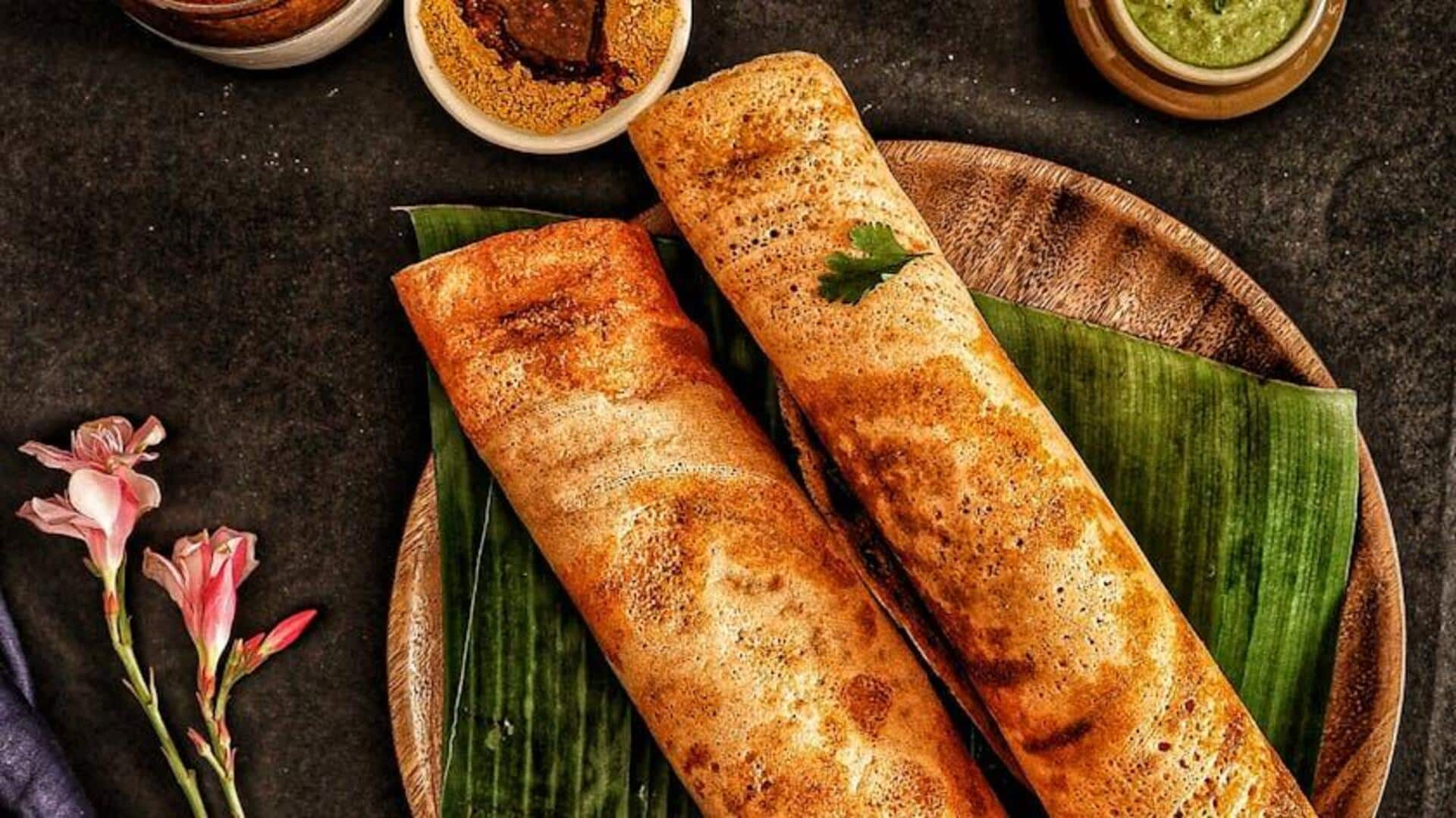
Dosa's evolution: From comfort food to gourmet dish
What's the story
The humble dosa—a South Indian staple—has transformed in the most interesting of ways over the years. Once a simple rice and lentil pancake, the dosa is now a versatile dish, celebrated all over the globe. Here's how the dosa went from being a humble street food to an imperative part of fine dining experiences globally. The dosa's journey perfectly mirrors trends in culinary innovation and globalization.
Historical journey
Ancient beginnings to modern times
Dosa's history spans over a millennium, with its origin tracing back to ancient Tamil Nadu. Once an everyday breakfast item for locals, dosa was prepared with simple ingredients like rice and urad dal. Gradually, regional variations developed across India, each contributing distinctive tastes and textures. As trade routes opened up in medieval times, dosa started to spread beyond its birthplace.
Worldwide influence
Globalization and fusion cuisine
With globalization came the fusion of cuisines from different cultures. The dosa made its way into international kitchens where chefs experimented with fillings and accompaniments. Today's dosas can be stuffed with everything from cheese to vegetables or even sweet fillings like chocolate spread for dessert versions. This adaptability has helped cement its place on menus around the world.
Gourmet appeal
Dosa in fine dining establishments
In the past few years, dosas have entered the domain of upscale restaurants, where they are being revamped into gourmet spreads. Chefs are adding elements of the exotic, like truffles or saffron, while keeping the traditional chutneys or sambhar on the side. These innovations have taken dosas from the streets to haute cuisine that pleases the discerning palates.
Nutritional value
Health trends boosting popularity
The trend of health-conscious eating habits has also contributed to dosa's growing popularity owing to its nutritional benefits—being gluten-free when made the traditional way—and high protein content from the lentils used in the batter preparation process. Many health-conscious individuals appreciate this, as well as the fact that they are customizable with different toppings or fillings served at eateries these days.